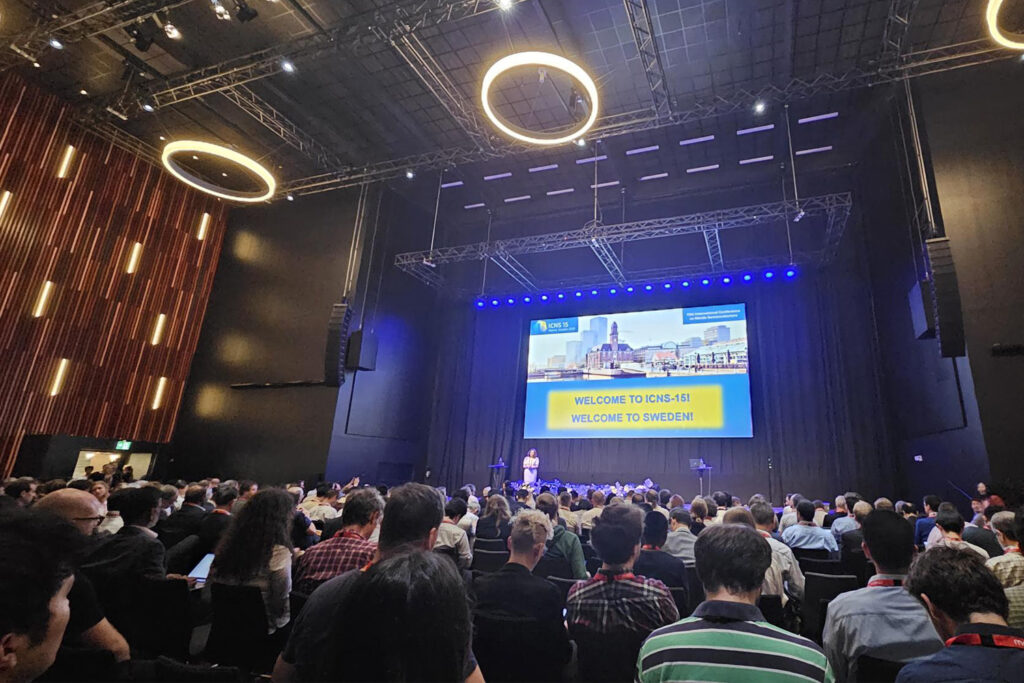Link to article/interview in Power Electronics News
April 27, 2023 Maurizio Di Paolo Emilio
SweGaN has developed a novel design and an epitaxial process that eliminates the buffer layer in the GaN on SiC structure, improving device performance and reliability.
In power electronics, GaN on SiC is a promising semiconductor material suitable for various applications. GaN on SiC consists of gallium nitride (GaN) layers grown on a silicon carbide (SiC) substrate. GaN on SiC has several key properties that make it attractive for a wide range of applications, including power electronics and high-frequency devices:
- Wide bandgap: GaN has a wider bandgap than silicon, which allows for higher voltage operation and reduces the loss of energy through heat dissipation
- High electron mobility: GaN has much higher electron mobility than silicon, which allows for efficient electron transport and high-speed switching
- High thermal conductivity: SiC has a high thermal conductivity, which enables efficient heat dissipation from the device, leading to improved device reliability
- Low leakage current: The high-quality GaN on SiC provides a better surface for the device, reducing the leakage current at high bias.
The classical GaN on SiC structure
The classical GaN on SiC structure typically consists of a SiC substrate, a buffer layer, and a GaN layer that serves as the active region for device operation. The buffer layer helps to accommodate the lattice mismatch between the SiC substrate and GaN layer, reducing the likelihood of dislocations and improving the electronic performance of the device. The HEMT devices are typically formed in the GaN layer using lithographic techniques. This structure has been widely used in GaN-based devices, including power electronics and RF applications. However, it has some limitations, such as problems with thermal management and reliability due to the relatively thick buffer layer.
The thickness of the GaN layer in the classical GaN on SiC structure can vary, but it is typically some microns thick. The thickness of the buffer layer can also vary, but it is usually thick enough to accommodate the lattice mismatch between SiC and GaN. The thickness may depend on the specific growth method and device design parameters.
SweGaN’s QuanFINE structure
SweGaN, a Swedish company specializing in manufacturing GaN on SiC epiwafers for components and devices used in the RF industry and other demanding applications, has developed a novel design and an epitaxial process that eliminates the buffer layer in the GaN on SiC structure, improving device performance and reliability.
“The new epitaxy method, that we call buffer-free epitaxy, is what makes us very different from what you can find in the market in terms of the epi wafers”, said Jr-Tai Chen, CEO & Founder of SweGaN, in an exclusive interview with Power Electronics News.

“We are focused on this material, our production is already ISO certified, and the company is expanding. We secured series A funding last year, and our technology is actually in production”, Chen added.
The SweGaN’s structure allows for shrinking the device dimension because of the enhanced robustness of the materials, which leads to improved device performance. The QuanFINE structure utilizes the AlN nucleation layer as the back barrier to prevent leakage current and minimize the short channel effects. The hot channel is brought closer to the heat sink SiC, which leads to better thermal management and improved reliability. According to SweGaN, the QuanFINE structure is touted to provide superior reliability and outperform conventional GaN-on-SiC HEMTs.
QuanFINE GaN-on-SiC heterostructures are capable of achieving a total epitaxial layer thickness below 350 nm without sacrificing any of the material’s characteristics. A brand-new growth process, transmorphic heteroepitaxy, is at the core of the buffer-free, GaN-on-SiC heterostructure. The fact that neither the composition nor the atomic arrangement abruptly change at the material contact is what makes it unique. Instead, there is a gradual transition from one to the other over a nanometre, occurring via vacancy ordering.
The foundation of the QuanFINE structure, shown in Figure 1, is a hybrid material made of high-electron-velocity thin GaN and high-breakdown-voltage bulk SiC. This structure reduces production time, moves the hot channel closer to the heat-sink SiC substrate, and removes deep traps caused by Fe by removing the customary thick doped buffer layer.

QuanFINE is an order of magnitude thinner than earlier GaN on SiC generations. It allows devices to achieve higher switching frequencies and power densities while supplying superior material quality and improved thermal transfer. This level of performance is provided without having to pay more for epi-wafers, and it also offers lower power consumption and simpler systems, which ultimately benefits manufacturers greatly.
“We think that GaN on SiC is an already established technology for high-power amplifiers: can GaN on Si be applied to low power applications? We think there will be some coexistence of GaN on SiC and GaN on Si,” said Chen.
The high-temperature technique used by SweGaN produces epitaxial layers of GaN and AlN that exhibit high structural quality. Typically, the AlN nucleation layer has no grain boundaries and the threading dislocation density in the GaN layer is in the low 108 cm-2 range. This structure, shown in Figure 2, has the finest structural quality available, guaranteeing not only the resilience of GaN but also significantly lowering the probability of device failure due to structural flaws.

The thin AlN nucleation layer also enhances the heat transfer from the channel to the SiC substrate’s high thermal conductivity. This enables SweGaN to address reliability, one of the main problems with RF and power equipment. The device lifetime is multiplied by ten when the operating temperature is reduced by 25°C.
“Beyond telecom and RF, we think our material has a potential fit in applications like onboard chargers, where reduced footprint and high-frequency switching capability will come into play”, said Chen.
The device dimensions of commercial GaN-on-silicon devices may be reduced while maintaining their voltage rating, claims SweGaN. For instance, by utilizing our buffer-free technology instead of GaN-on-silicon material, it is feasible to reduce the gate-to-drain spacing in 600 V GaN power devices without field plates from 20 µm to below 10 µm. The power loss from this miniaturization would be considerably minimized. The preliminary results also indicate its potential for 1200 V GaN power devices.
SweGaN’s epitaxial wafers can be highly customized according to the customer’s needs. SiC wafers are available in 4 and 6 inches sizes, while AlGaN, InAl(Ga)N, and AlN barriers with different thicknesses can be selected.
SweGaN is a company dedicated to environmental sustainability, and its products are made with waste minimization and energy consumption in mind. The business consistently innovates and enhances its products and has won multiple honors for its innovative technologies and commitment to quality.
“Our headquarters are in Sweden, a country that emphasizes clean energy and promotes environmentally friendly working places and factories. In our new facility, we will use renewable energies, like solar panels, to power part of our plant and production line. We will continue to work with local authorities and to strengthen the usage of green energy and renewables”, said Chen.


